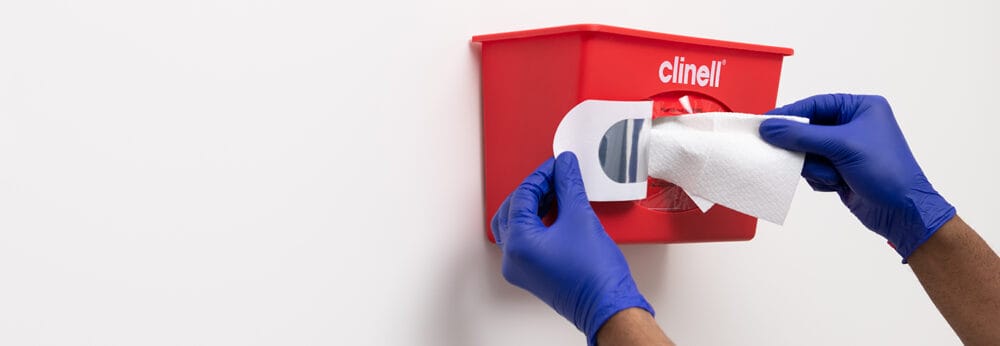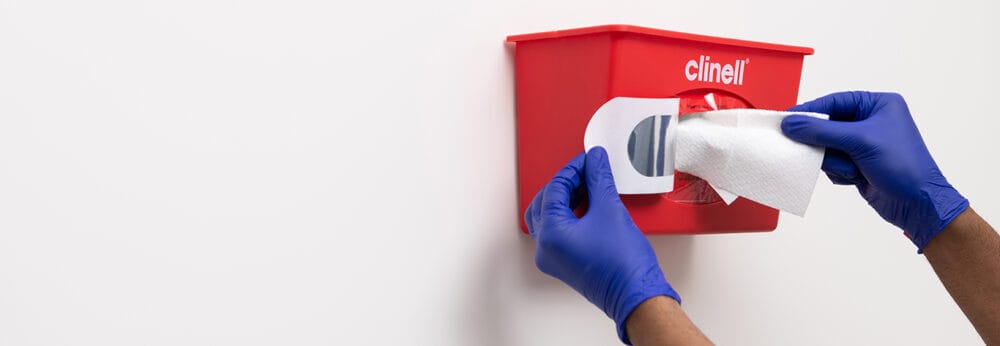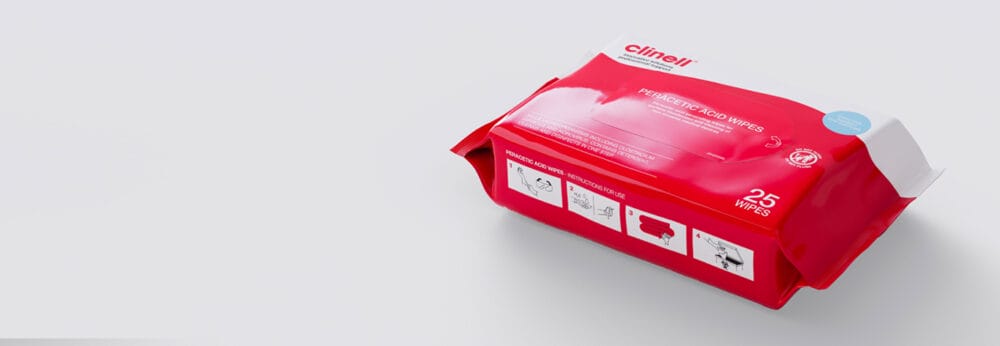Posts Tagged ‘Peracetic acid’
Tactics for managing C. diff infections (CDIs) with Clinell Peracetic Acid Wipes
In this blog post, we’ll uncover why Clostridioides difficile poses a challenge and how to best prevent the transmission of spores with commode decontamination. Working in healthcare, “C. diff” is always a pathogen of concern. Rightly so, as it has been associated with costly outbreaks in healthcare settings, especially since the emergence of hypervirulent strains since…
Read MoreEN 17126, why Clinell Peracetic Acid Wipes and other biocides are classed as sporicidal
Today on the blog, we discuss endospores in healthcare, sporicidal EN testing and how effective Clinell Peracetic Acid Wipes really are. Endospores in healthcare Bacteria utilise a wide variety of defence mechanisms when facing extreme environmental conditions. Certain Gram-positive bacteria produce intracellular spores called endospores, which prove a complex challenge for healthcare settings and infection prevention in general. These…
Read MorePeracetic Acid Wipes: A new name for Clinell’s red wipes
Clinell’s famous red wipes have a new name: Clinell Peracetic Acid Wipes (previously ‘Sporicidal Wipes’). To match, they have a bank of evidence which supports their use for the prevention of outbreaks caused by high risk and hard-to-kill microorganisms. 2008 was a special year for GAMA Healthcare. Not only were we awarded our first NHS…
Read MoreDisinfectant wipes mop the floor with chlorine solution
There are few well-controlled studies investigating the impact of disinfectant wipes in a clinical setting compared with standard methods. A study from a group of researchers in Cardiff shows that one-step cleaning and disinfectant wipes are more effective than two-step detergent and chlorine solution cleaning / disinfection in removing microbial contamination from hospital surfaces. What was the…
Read MoreTime to disinfect the loo before flushing?
A fascinating new study in AJIC suggests that adding a disinfectant to the toilet bowl before flushing results in a significant reduction in viral contamination of a bathroom. Does this mean we should disinfect the loo before flushing it? The study used MS2 coliphage as a proxy marker of pathogenic virus contamination. The degree of…
Read MoreIs your wipe really sporicidal?
Sporicidal disinfectant wipes are being used increasingly for tackling surfaces contaminated with C. difficile spores in hospitals. A wide range of ‘sporicidal’ wipes are coming onto the market. However, concerning published data shows that some wipes marketed as being ‘sporicidal’ do not have meaningful activity against spores when tested under controlled laboratory conditions. This blog outlines three key questions…
Read MoreHydrogen peroxide and peracetic acid: a new kid on the automated room decon block!
A number of automated room decontamination (ARD) systems are available. Most of the evidence relates to hydrogen peroxide based or UV based systems. A new study reports on the impressive efficacy of an ARD system combining hydrogen peroxide and peracetic acid, achieving a 6-log reduction on bacterial endospores. There is plenty of evidence that ARD systems using ‘high concentration’…
Read MoreWhat’s in the disinfectant pipeline?
We talk often about the ‘antibiotic pipeline’, but as the pipeline slows to a trickle, the ‘disinfectant pipeline’ is made even more important. Prof Jean-Yves Maillard from Cardiff University recently gave a talk at the HIS Spring Meeting scanning the horizon for new disinfectants. Prof Maillard began with highlighting the emerging challenge that biofilms present to effective…
Read MoreSporicidal granules for high level disinfection
New evidence shows that flooring can be a reservoir for pathogens of significance in healthcare. Uses Peracetic Acid (PAA) Technology PAA generating products are now considered a suitable substitute in situations where 1,000 and 10,000 ppm of chlorine are recommended. Unique granule formulation Easily mixed within bespoke 1L and 2.5L jugs allowing quick and easy activation, avoiding dilution…
Read More







